#shugendo
Explore tagged Tumblr posts
Text




Kumano: The Practice of Shugendo - Japanology Plus | NHK World Japan
Join the host as he get to know the practitioners of Shugendo known as the Yamabushi, who push themselves to the limit, trekking through the Kumano mountainside in pursuit of spiritual purification.
Shugendo is a syncretic religion combining elements of Shinto and Buddhism with Taoism, animist beliefs, and shamanistic practices played out on some of Japan’s most sacred mountains.
#shugendo#shinto#buddhism#taosim#yamabushi#animist#japan#kumano#kii peninsula#nachi falls#kumano kodo#spiritual japan#japan travel#japanology plus#nhk world japan#japan vlog#vlog#pilgrimage in japan#hiking in japan#nature therapy
8 notes
·
View notes
Text

Sanbutsu-ji Setsubun Ceremony Mitoku-san, Tottori Prefecture, Japan
#travel photography#travel#photography#japan#folklore#shugendo#Tottori#mitoku-san#setsubun#tradition#ceremony#buddhism#sanbutsuji#日本#鳥取県#三仏寺#三徳山#節分
7 notes
·
View notes
Text
Introduction
The Japanese Religious Blend Known as Shugendo
Though less widely known or practiced today than Buddhism or Shinto, shugendo was once a major force in Japan...Its practitioners, called shugenja, once provided the healing and spiritual services required by isolated communities. They also organized commercial markets and guided worshippers on pilgrimage...known more commonly as yamabushi (“one who lies down in the mountain”), were itinerant, usually unordained monks.
—Pages 24-25

Their struggle for enlightenment is embodied in their most important gods, Fudo Myō-o and Zao Gongen. Zao is a Japanese deity who first appeared on Mount Yoshino, where En no Gyoja was performing a thousand-day ascetic practice. The story recorded in a thirteenth-century work says that the Buddha appeared to him in turn as Shakyamuni, Kannon, and Maitreya. En no Gyoja rejected this, saying that the visage was too gentle for converting the evil world to Buddhism. So the god was transformed into the terrible figure of Zao with his arm raised in anger, his foot poised to strike the ground, his eyes ablaze, and flames shooting up around him.
—Page 25
Confucianism and Its Impact on Religion and Governance
...The greatest impact was on the ruling elite, who adopted its five tenets on the proper relationships between ruler and vassal; parent and child; husband and wife; elder and younger sibling; and friends...It includes a code of morality that emphasizes truthfulness, intelligence, sincerity, virtuousness, and obedience. The emphasis in Japan on ancestor worship, praying in front of an urn holding the ashes of the deceased, and the idea of heavenly and earthy kami are also influences of Confucianism.
—Pages 25-26
...In pre-medieval times it acted as a philosophical underpinning to kami worship, providing instruction on the proper way to live. Such considerations were lacking in kami worship—which was primarily oriented toward ritual for protecting the state and the emperor, protecting the crops from damage, and protecting the community from plagues and other forms of disaster. Though the Kojiki and Nihon shoki contain some limited moral allegory, there is nothing in the way of an ethical doctrine. Because Confucianism had few deities of its own, there was no obstacle to Shinto importing its precepts from the standpoint of belief in kami. Conversely, as a systematic and practical philosophy concerned with the reality of the world, Confucianism had little patience with religion... The anti-Buddhist bias found an ally in Shinto during the late Edo period.
—Page 26
The Japanese style of Divination Called Onmyodo
...In essence, onmyodo is Japanese divination based primarily on a combination of Chinese, five phase (or five-element) theory and yin/yang. The latter is a cosmology of balance between constantly cycling opposites, embodied in the familiar black and white symbol called the tai-ji...Five-phase theory is based on the “elements” of water, fire, wood, earth, and metal. The theory extended to every aspect of the physical world. For example, what was identified with birth, Jupiter, the east and so on. Knowledge of the proper use of materials, colors, or sounds could produce the correct alignment of forces and a positive outcome to any endeavor.
—Page 27
Shinto Today
...Shinto has no council of leaders deciding how doctrines should be interpreted or how they should be applied to present-day moral or political issues. There are no dictates about what one should or shouldn’t believe, but there are practices aimed at developing the right way to live, which can be described as developing purity of heart, brightness of character, thankfulness, and reverence for the kami. The positive or negative influence of the kami on daily life is considered the result of our reverence or neglect of them. Importance is placed on the correct ritual acts toward the kami and the correct attitude toward life. There are also accepted practices on the proper rate to venerate the gods in general and for venerating specific deities at specific locations. As far as the general public goes, such acts will usually involve the type of simple visitation and prayer described previously...
—Page 29
The Shinto Priesthood
Many Shinto priests serve only part time and many serve voluntarily. They are not cloistered, do not wear priestly garb outside of official duties and are free to marry. There are approximately twenty-two thousand licensed priests serving about eighty thousand shrines. This means that about two-thirds of all shrines are unmanned on a full-time basis. There are also certain rites traditionally performed by community members, most of which are related to festivals; however cleaning and daily offerings are also performed by them at unmanned shrines.
—Page 30
The daily schedule begins with cleaning the shrine grounds and buildings early in the morning. After that, a ceremony of the daily offering of food and drink for the kami is conducted, including reading of the Oharae no kotoba (purification prayer). First the area and the participants are purified in a ceremony called shubatsu. Offerings are placed on small tables within the haiden, on the steps in front of the honden, or some other designated place. They will usually consist of a rice wine called miki, rice, salt, and water. The food offering, called shinsen, is made once in the morning and possibly once in the evening, depending on the shrine. On special feast days mochi, fish, seaweed, vegetables, fruit, and confections may also be offered. The offerings are withdrawn in the evening and thanks given for divine protection.
—Pages 30-31



5 notes
·
View notes
Text
#buddhism#esoteric#esoterism#esoteric buddhism#shingon buddhism#japan#occult#religion#sailor moon#shugendo#tantra#thelema#shingon#acala#pagan#paganism
2 notes
·
View notes
Text
Misty path to Dewa Sanzan temples, Japan
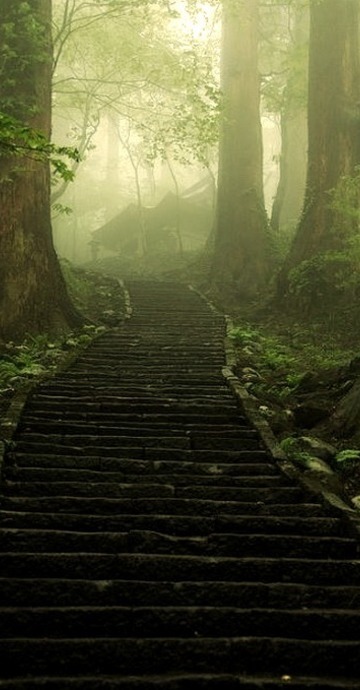
6 notes
·
View notes
Text

Yamabushi mountain ascetics praying at the Yakiyama Kōjindō (八鬼山荒神堂), a modest chapel enshrining the fire & hearth deity Sanbō-Kōjin (三宝荒神) at the top of Yakiyama Mountain (八鬼山) in Owase, Mie Prefecture
Photo from a November 5, 2022 article in the Chunichi Shimbun
#japanese religion#三重県#mie prefecture#尾鷲市#owase#八鬼山#yakiyama#山伏#yamabushi#修験道#shugendo#熊野古道#kumano kodo#religión japonesa
16 notes
·
View notes
Text
it's giving
18 notes
·
View notes
Text
Digital Monster Entry (DME)
Name: Kuzuhamon
(lit. Legendary White Kitsune Monster)
Stage: Ultimate
Attribute: Data
Type: God Man
A God Man type, Ultimate level Digimon that is said to be a Fox-species digimon that lived long, and transformed to take a humanoid form, is said that only those among them of a high level are able to evolve into a digimon more powerful than Kuzuhamon, it is versed into Shinto, Omnyōdō and Shugendō. A signle Kuda-Gitsune lurks within the pipe it carries on the belt around its waist, and it is able to employ this Kuda-Gitsune to use it for things like attacking and gathering information, Its signature moves are the following:
• Using the Kuda-Gitsune it carries on its waist to attack the opponent, an attack called Ura Izuna.
• Spreading a purifying barrier with its Shakujou staff that exorcises evil spirits, the Taizōkai Mandala.
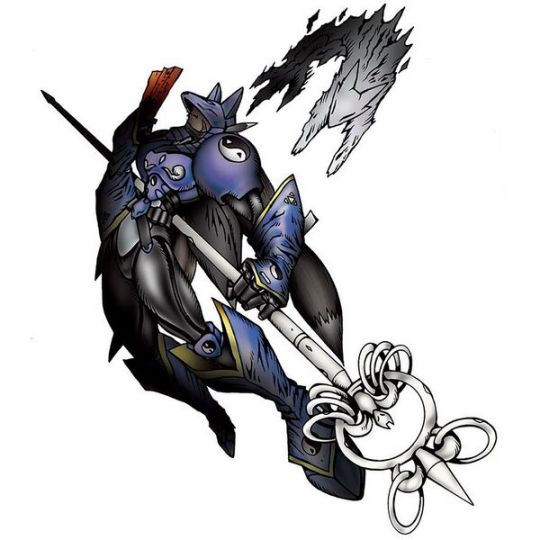
6 notes
·
View notes
Text
Misty path to Dewa Sanzan temples, Japan

2 notes
·
View notes
Photo

Misty path to Dewa Sanzan temples, Japan
2 notes
·
View notes
Text
Misty path to Dewa Sanzan temples, Japan
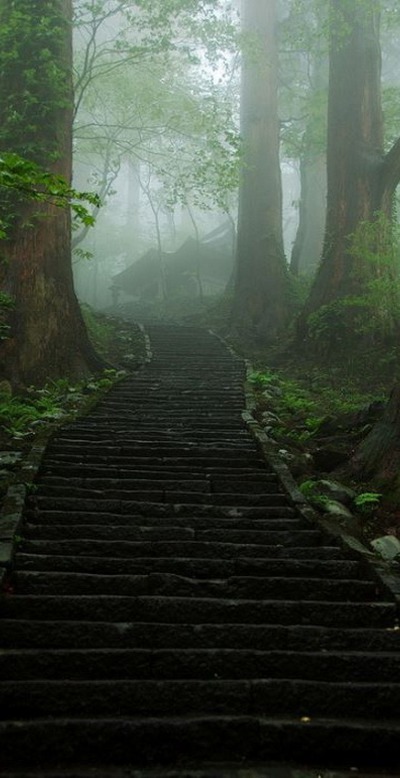
0 notes
Text
Misty path to Dewa Sanzan temples, Japan
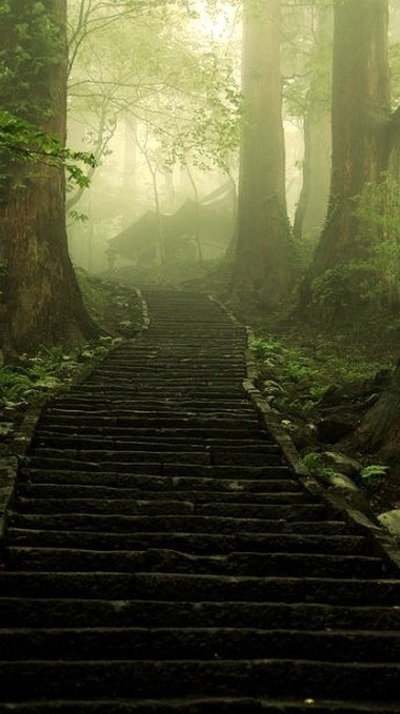
0 notes
Text
Kuya no Taki
I often went hiking with meetup groups in Japan during the summer. We went to this beautiful waterfall on Mt. Atago. The mountain is a sacred space for Shugendō, with the divine protector of the mountain being a kami called Atago Gongen.




This particular waterfall was fascinating as there were several crevices further up with statues and offerings, and I was told the monks use the metal chains secured to the rocks to climb up the waterfall and replace offerings.




1 note
·
View note
Text
26-ji 13-bu, Spring in Between, Boku no Machi wa Ofuro ga Atsukute Maizokin ga Dete Ramen ga Umai., Ikuharu Kakete Oi Yukan Kajin Baba Akiko no Hibi, Itan no Jun'ai, Shugendo Renaissance, Takumi-kun Shiri-zu Nagai Nagai Monogatari Hajimari no Asa, Japanese Film Trailers
Happy Weekend The Cannes Film Festival is still in effect and it has been interesting collecting views on the films playing. Monster by Hirokazu Kore-eda came out of the gate strong with solid reviews but it was soon eclipsed by Jonathan Glazer’s Zone of Interest. The other big Japanese film, Kubi, has also received mixed reviews and while Western critics have fallen over themselves to praise…
youtube
View On WordPress
#26-ji 13-bu#Boku no Machi wa Ofuro ga Atsukute Maizokin ga Dete Ramen ga Umai.#Ikuharu Kakete Oi Yukan Kajin Baba Akiko no Hibi#Itan no Jun&039;ai#Japanese Film Trailers.#Shugendo Renaissance#Spring in Between#Takumi-kun Shiri-zu Nagai Nagai Monogatari Hajimari no Asa#Youtube
1 note
·
View note
Text
Japanese Magick
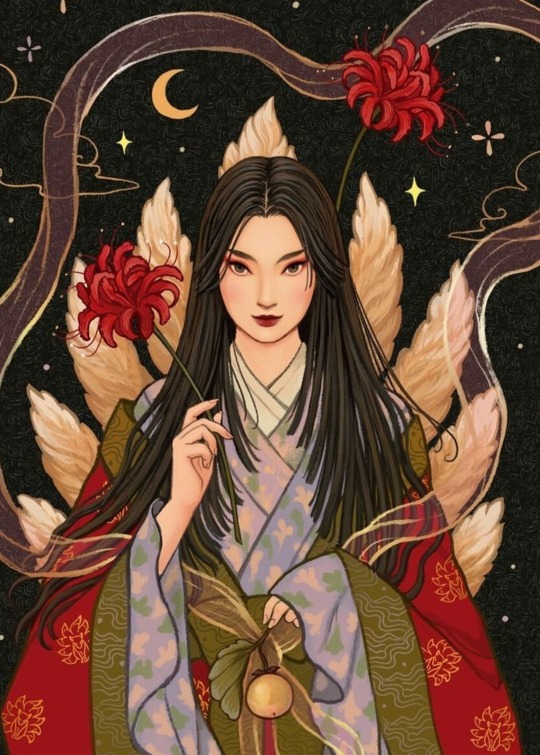
Japanese spirituality and folk magick are deeply rooted in Shinto, Buddhism, and indigenous traditions that blend animism, kami (spirits), and ritual practices. While Japan does not have a historical "witchcraft" tradition in the Western sense, it has a rich magickal heritage that includes onmyodo (esoteric cosmology), shugendo (mountain asceticism), folk magick, and spiritual practices passed down through generations.
So, let's explore the key elements of Japanese witchcraft and magick, including history, deities and spirits, traditional magickal practices, and how modern practitioners integrate these elements into their craft.
Foundations of Japanese Magick
🏮Shinto (神道) – The Way of the Kami
Shinto is the indigenous spiritual tradition of Japan, centered on reverence for kami (divine spirits) found in nature, ancestors, and sacred places. Many Japanese magickal practices stem from Shinto beliefs and rituals.
Key Concepts in Shinto Magick:
• Kami (神) – Spirits or deities that inhabit all things, including trees, mountains, rivers, and animals.
• Purification (禊 Misogi & 祓 Harai) – Cleansing oneself or a space of impurities before engaging in spiritual work.
• Offerings (供え物) – Giving food, incense, or prayers to kami and spirits to seek blessings or protection.
• Omamori (お守り) – Charms that provide luck, protection, and blessings.
🏮Onmyodo (陰陽道) – The Way of Yin-Yang
Onmyodo is an ancient system of esoteric cosmology and divination based on Taoist principles of yin-yang and the five elements. Practitioners, known as onmyōji (陰陽師), were skilled in astrology, geomancy, exorcism, and protective magick.

Onmyodo Magick Includes:
• Divination (卜占) – Fortune-telling using astrology, geomancy, or sacred texts.
• Talismans (護符 Gofu / Ofuda) – Paper or wooden charms inscribed with sacred symbols or prayers for protection.
• Spirit Banishing (鬼払い Oni-barai) – Rituals to remove negative spirits and influences.
• Elemental Magic (五行 Gogyō) – The Five Elements (Wood, Fire, Earth, Metal, Water) used for balance and spellwork.
🏮Shugendo (修験道) – Mountain Asceticism
Shugendo is a mystical tradition that blends Shinto, Buddhism, and Taoism. Its practitioners, known as yamabushi (山伏), are mountain monks who engage in spiritual endurance training, chanting, and nature-based magick.
Shugendo Magical Practices:
• Nature-Based Rituals – Using waterfalls, mountains, and caves for spiritual cleansing and empowerment.
• Firewalking (火渡り Hi-watari) – Walking over fire as a purification ritual.
• Mantra Chanting (真言 Shingon) – Reciting sacred phrases to invoke deities and spirits.
Key Deities and Spirits in Japanese Witchcraft
🏮Major Kami Associated with Magick:
• Inari Okami (稲荷大神) – Kami of prosperity, agriculture, and fox spirits (kitsune). Often invoked for abundance and transformation magick.
• Tsukuyomi (月読命) – Moon deity, associated with night magick, divination, and intuition.
• Ame-no-Uzume (天宇受売命) – Goddess of dawn, joy, and ritual dance. Invoked for creativity and uplifting energy.
• Raijin & Fujin (雷神・風神) – Thunder and wind gods, called upon for storm magick and elemental work.
• Susanoo-no-Mikoto (須佐之男命) – Kami of storms, exorcism, and warrior energy.

🏮Yokai (妖怪) & Spirit Beings:
Japanese folklore is filled with supernatural creatures, some of which play a role in magick:
• Kitsune (狐) – Fox spirits associated with transformation, illusion, and trickery.
• Tengu (天狗) – Mountain spirits and warriors with powerful knowledge of magick and martial arts.
• Yurei (幽霊) – Ghosts and ancestral spirits that may require appeasement or exorcism.
Traditional Japanese Magickal Practices
🏮Divination & Fortune-Telling:
• Omikuji (おみくじ) – Paper fortunes drawn at shrines to reveal one's luck.
• I Ching (易経 Ekikyō) – Taoist divination practice adopted in Japan.
• Tenmon (天文) – Japanese astrology, used by onmyōji for predicting fate and auspicious times.
🏮Talisman & Charm Magick:
• Omamori (お守り) – Protective charms bought from shrines, charged with blessings from kami.
• Ofuda (御札) – Paper talismans often hung in homes for protection.
• Shide (紙垂) – Zigzag-shaped paper strips used in purification and shrine rituals.
🏮Protection & Banishing Spells
• Salt Purification (塩清め Shio-kiyome) – Sprinkling salt around spaces to remove negativity.
• Oni-barai (鬼払い) – Banishing rituals to drive away malevolent spirits.
• Suzu (鈴) – Small bells used to ward off bad spirits.

🏮Elemental & Nature Magick
• Waterfall Purification (滝行 Takigyo) – Ritual bathing in waterfalls to cleanse the spirit.
• Moon Rituals (月の魔法 Tsuki no Maho) – Working with lunar phases for manifestation and divination.
• Kitsune Magick – Calling upon fox spirits for wisdom, transformation, and trickster energy.
Modern Japanese Witchcraft & Contemporary Practices
While Japan does not have a strong tradition of "witchcraft" as seen in the West, modern witches and spiritual practitioners integrate traditional elements into their craft.
🏮Ways to Practice Japanese-Inspired Magick Today:
• Shrine Visits – Offering prayers and petitions to kami.
• Japanese Herbal Magick – Using plants like mugwort (ヨモギ yomogi) for protection and cleansing.
• Tea Rituals – Preparing and blessing tea with intentions for peace, health, and wisdom.
• Shinto-Inspired Spellwork – Creating small home altars (kamidana) for divine guidance.
• Combining Onmyodo with Western Practices – Blending astrology, talisman magic, and elemental balancing with modern witchcraft.
Japanese magick is deeply connected to nature, spirits, and ancestral traditions. While Japan does not have a direct equivalent to Western witchcraft, its spiritual and folk practices offer rich ways to work with energy, divination, and protection magick. Whether you are drawn to Shinto nature worship, onmyodo divination, or spirit work with yokai, Japanese magickal traditions provide a fascinating and profound path for spiritual exploration.

#japan#japanese#japanese mythology#shinto#Kami#onmyodo#kitsune#Oni#tsukuyomi#witch#magick#witchcraft#demons#witchblr#witch community#eclectic witch#eclectic#pagan#spellwork#divination#protection magic#talisman#charms#spirit#nature spirits#exorcism#protection#i ching#culture#Religion
75 notes
·
View notes
Text



Fan Pseudo-Servants (Atlas, Sinmara, Zao Gongen)
They all play different roles, but I think I need to update Kirschtaria’s sheet soon because that was an outdated and messy concept from 2021– though I already posted illustrations of him here before ^_^
Ophelia needed a knight, but she became one herself. Surtr’s affection for her made him gift her Laeveteinn, making her its new keeper, and Sinmara was summoned “within” her as a resulr.
Pepe-san’s design is my most recent work out of these three :) Their class betrays their manifestation as they essentially break their oath that this would be their final life. The patron god of Shugendo, Zao Gongen, is the avatar of three Shinto interpretation of Buddhist deities
I hope to keep making Crypter fanservants because I miss them every day. I don’t want Kirschtaria to be alone :’)
More fanservants to come in the future, this time more original ones!
#fgo#fgo oc#kirschtaria wodime#fate grand order#ophelia phamrsolone#scandinavia peperoncino#crypters#fanservant#fgo kirschtaria wodime fanservant
598 notes
·
View notes